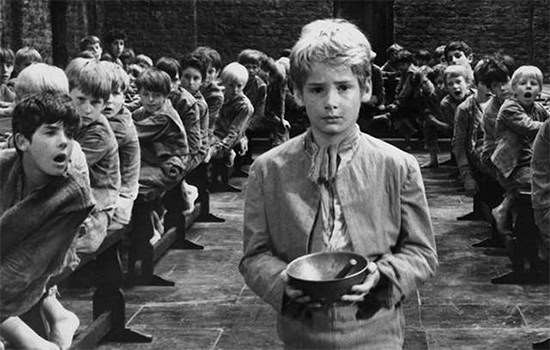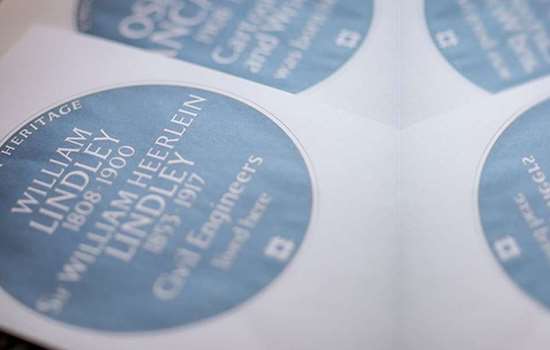CHAPLIN, Charlie (1889-1977)
Plaque erected in 2017 by English Heritage at 15 Glenshaw Mansions, Brixton Road, London, SW9 0DS, London Borough of Lambeth
All images © English Heritage
Profession
Actor, Film-maker
Category
Theatre and Film
Inscription
CHARLIE CHAPLIN 1889-1977 Actor and Film-maker lived here in Flat 15 1908-1910
Material
Ceramic
Charlie Chaplin was one of the greatest stars of early cinema. In addition to his iconic on-screen performances, he was also a pioneer behind the camera – he directed, produced and edited many of his films, and even composed the music for them. He is commemorated with a blue plaque at 15 Glenshaw Mansions in Lambeth, where he enjoyed a relatively settled stay in 1908–10 following an impoverished childhood.
London Poverty
Even by the standards of his time, Charles Spencer Chaplin endured a childhood of extreme deprivation. His parents separated when he was still a baby and his mother brought up Charlie and his brother Sydney in poverty. Born in Walworth, Chaplin spent most of his childhood in Lambeth, moving between addresses and spending several periods in workhouses and workhouse schools. His mother Hannah was committed to an asylum due to mental illness when Chaplin was only nine years old, and she was readmitted again two years later.
Chaplin’s experiences of living in poverty informed his iconic Little Tramp character, which later brought him worldwide fame.
Music Hall Beginnings
Both of Chaplin’s parents performed in London’s music halls and Chaplin was introduced to the stage from an early age. His first taste of show business was apparently in Aldershot, Hampshire, where, aged no more than six, he took to the stage in his mother’s place when she lost her voice.
Early in 1899 he began performing in a clog-dancing troupe called the Eight Lancashire Lads. Jobs in theatre and vaudeville followed, but his big break came in 1908 when he joined the Fred Karno Company. Dialogue had been banned from the music halls in an attempt to protect the theatre industry, but Karno circumvented the rule by encouraging ‘speechless actors’ to use exaggerated body language to portray their characters. These mime-based performances became a key part of Chaplin’s schooling as a comic actor.
Glenshaw Mansions
It was thanks to his employment with the Fred Karno Company that Chaplin and his brother Sydney (also performing for Karno) could afford to rent 15 Glenshaw Mansions, where his blue plaque is now installed. Sydney and Charlie’s flat was on the top (third) floor. It was the first home Chaplin could call his own and he recalled it with affection as a ‘cherished haven’. They carpeted the front room, put lino down elsewhere, and spent a princely £40 on furnishings from a second-hand furniture shop in Newington Butts – a couch and two armchairs, with a fretwork Moorish screen, lit from behind by yellow bulb in one corner, and a tasteful female nude portrait in the other. The effect, Chaplin wrote, was ‘a combination of a Moorish cigarette shop and a French whore-house. But we loved it.’
Chaplin left the flat for the last time at the crack of dawn on 20 September 1910 to go to the United States with Karno. Disliking goodbyes, he left a note for Sydney on the table, promising to write. When he returned from the US in June 1912, he ‘looked forward to returning to London and our comfortable little flat’, which in his absence he had come to regard as ‘a sort of shrine’. However, when Sydney came to meet him at the station, he informed him that, having got married, he had given it up and moved elsewhere. Chaplin took a back room elsewhere on the Brixton Road (the house number is unidentified) and resolved to go back to the US as soon as he could. ‘I suppose if I had returned to our little flat, my feelings might have been different,’ he later said.
Hollywood Fame
While touring with Karno in the US, Chaplin’s aptitude for silent slapstick won him a contract from Mack Sennett’s Keystone Film Company in California.
In his film acting debut, Making a Living (1914) Chaplin played an English stereotype, in top hat and frock coat, but it was the Little Tramp character that became his hallmark. Clad in tight jacket, voluminous trousers and oversized shoes, Chaplin first played the character in Kid Auto Races at Venice (1914). He went on to star in 35 films in 1914, and by 1917 he was the biggest star in cinema, as indicated by the million-dollar contract he negotiated with First National. In 1919 he gained greater control over his work by co-founding United Artists, with Douglas Fairbanks, Mary Pickford, and D.W. Griffith.
The Kid (1921), Chaplin’s first feature length film, was a career milestone, and he went on to direct himself in a succession of outstanding features, including The Gold Rush (1925), City Lights (1931) and Modern Times (1936). He finally made a ‘talkie’ with The Great Dictator (1940), a satire on Hitler. Now regarded as a classic, this was controversial on account of its political content, which seemed to many to be as anti-capitalist as it was anti-fascist.
Later Life
Chaplin’s left-wing sympathies became increasingly problematic for him in McCarthy-era America, and there were calls to deport him. After attending the London premiere for Limelight in 1952, he settled in Switzerland with his fourth wife, Oona O’Neill.
Chaplin was awarded a special Oscar in 1972 and knighted in March 1975, an honour that had been mooted more than 20 years earlier, but vetoed for fear of offending the US government. He died two years later at his Swiss home, Manoir de Ban, Corsier-sur-Vevey, on Christmas Day 1977.
Nearby Blue Plaques
find out more
-
Listen to our podcast
Find out more about Charlie Chaplin in this episode of the English Heritage Podcast.
-

Chaplin, Dickens and London Poverty
Find out how childhood experiences of London poverty influenced the work of Charlie Chaplin and Charles Dickens.
-

Propose a blue plaque
Find out how to propose a blue plaque in London.
-

Find a blue plaque
Discover who has been commemorated by one of the blue plaques on buildings across London.